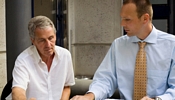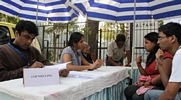|
|
 Acne (1,500) Acne (1,500)
 Addictions (1,500) Addictions (1,500)
 Advice (1,500) Advice (1,500)
 Allergies (1,092) Allergies (1,092)
 Alternative Medicine (1,500) Alternative Medicine (1,500)
 Anti Aging (1,500) Anti Aging (1,500)
 Breakup (1,500) Breakup (1,500)
 Cancer (1,499) Cancer (1,499)
 Dental Care (1,500) Dental Care (1,500)
 Disabilities (1,500) Disabilities (1,500)
 Divorce (1,500) Divorce (1,500)
 Elderly Care (1,498) Elderly Care (1,498)
 Goal Setting (1,500) Goal Setting (1,500)
 Hair Loss (1,500) Hair Loss (1,500)
 Health and Safety (1,497) Health and Safety (1,497)
 Hearing (1,500) Hearing (1,500)
 Law of Attraction (1,499) Law of Attraction (1,499)
 Marriage (1,500) Marriage (1,500)
 Medicine (1,497) Medicine (1,497)
 Meditation (1,499) Meditation (1,499)
 Men's Health (1,500) Men's Health (1,500)
 Mental Health (1,500) Mental Health (1,500)
 Motivational (1,500) Motivational (1,500)
 Nutrition (1,495) Nutrition (1,495)
 Personal Injury (1,499) Personal Injury (1,499)
 Plastic Surgeries (1,500) Plastic Surgeries (1,500)
 Pregnancy (1,496) Pregnancy (1,496)
 Psychology (1,500) Psychology (1,500)
 Public Speaking (1,500) Public Speaking (1,500)
 Quit Smoking (1,500) Quit Smoking (1,500)
 Religion (1,499) Religion (1,499)
 Self Help (1,500) Self Help (1,500)
 Skin Care (1,500) Skin Care (1,500)
 Sleep (1,500) Sleep (1,500)
 Stress Management (1,500) Stress Management (1,500)
 Teenagers (1,492) Teenagers (1,492)
 Time Management (1,500) Time Management (1,500)
 Weddings (1,500) Weddings (1,500)
 Wellness (1,500) Wellness (1,500)
 Women's Health (1,500) Women's Health (1,500)
 Women's Issues (1,500) Women's Issues (1,500)
|
The next group are the external factors. Among the most obvious external influences are a wide range of, not necessarily uncommon, genetic shaft defects, i.e. faults in the structural make up of the hair shaft, that lead to subsequent problems of hair breakage, poor hair condition and the inability to grow a full head of hair. These genetic shaft defects are invariably impossible to resolve and the effect is usually, but not always, detrimental. The 'spangled' hair in cases of 'pili torti', for example, gives a wonderful sparkle and shine particularly for longer female hair.
Ailments of the hair and scalp listed here under 'External Factors' occupy an enormous area of breadth and diversity and require specialist treatment by a Dermatologist or Trichologist. Psoriasis, seborrhoeic eczema, pityriasis, ringworm are all distressing ailments, although with expert supervision they can be treated and reversed or controlled. It is very unlikely that one can obtain healthy hair growth, whilst these conditions pre-exist.
External damage can, of course, be self-induced and damage and scarring following cosmetic treatment is relatively common. Heavily bleached and weathered hair will be dry, brittle, and probably have some structural damage. The central cortex and outer cuticle layer may be damaged, and the hair structure will be unwinding, rather like the end of a piece of rope, which the dead, keratinised shaft structure quite closely resembles. This structural collapse will not stop the hair growing at the active growing root end, but it will cause extensive hair breakage and the resultant appearance of hair loss. The hair shaft may also be damaged or destroyed by professional treatment, particularly perming, straightening or hair colouring which has not been correctly performed. Again, the hair should re-grow normally unless permanent damage or scarring has occurred to the scalp. The legal pursuit of the perpetrators is usually lengthy and unsatisfactory resulting in further hair loss.
Hair breakage and loss may also be quite literally self induced, sucking, pulling, twiddling and plucking your own hair will inevitably lead to hair damage and loss, giving the characteristic cropped patches of almost bald scalp. Like any habit, this can be extremely difficult to stop and there may well be a problem, even with "acceptance", for this condition. Watching the television or driving the car are two of the most common times for this to occur. Cessation of the activity will invariably result in the return to full hair growth, but breaking the habit can prove very difficult. Help should be sought from a friend, or family member, or, in more serious cases where psychosis may be present, expert guidance should be obtained.
More gentle external factors include seasonal variations where there is a greater fall in Spring and increased hair growth in Autumn, rather like the other mammals where the effect is pronounced. This change in growth rate in human hair is significant, and all clinical trials of hair growth products need to extend to a minimum of one year to allow for these seasonal variations.
Increasing age reduces the growth rate, with reduced hair texture and condition, as well as the loss of pigment in the hair shaft, and the onset of greyness. The failure of melanin production in the dermal papilla is considered by some researchers to be a highly significant mechanism and to be involved in the progress of Androgenic Alopecia. This is still the subject of further research but may explain why young men in their 20s and 30s who become prematurely grey do not appear to suffer from Androgenic Alopecia.
Gary Heron is one of Europe's leading trichologists for the past 20 years dealing directly with every type of hair loss and scalp disorder for both men and women of all ages and ethnic backgrounds. Gary has had over twenty years' experience in dealing with every type of hair or scalp problem. For example, he helps people suffering with scalp disorders such as psoriasis, seborrhoeic dermatitis, folliculitis or from hair loss and thinning caused by genetic baldness, alopecia or through chemical or physical damage.
Gary says," Everybody will experience some degree of trouble with his or her hair or scalp at some time. However, if you are experiencing hair loss or an irritating scalp problem you do not need to just tolerate it. You can take an active step today and seek help from The Hair Centre". All treatments products supplied are formulated especially for The Hair Centre by leading trichologists and chemists. They have undergone exhaustive clinical trials and testing to ensure we can target disorders of the hair and scalp effectively.
|
|
|



